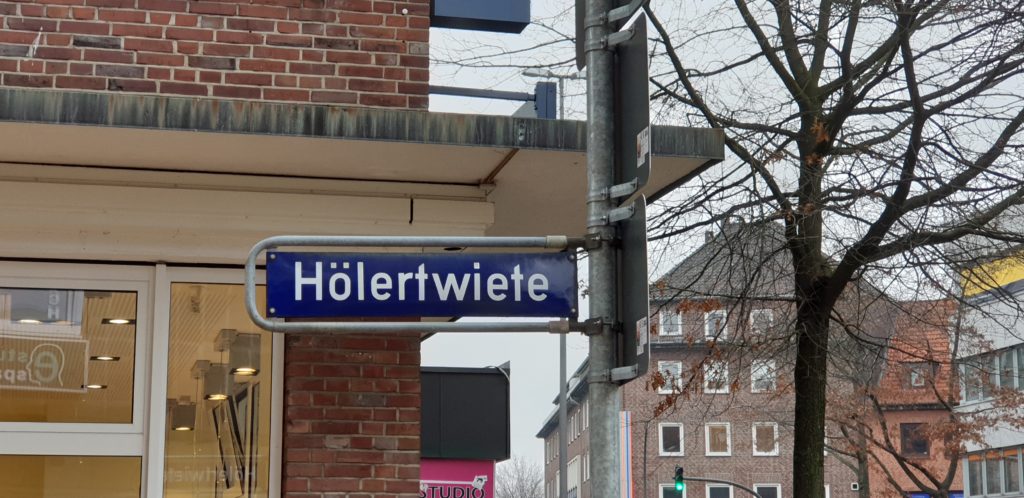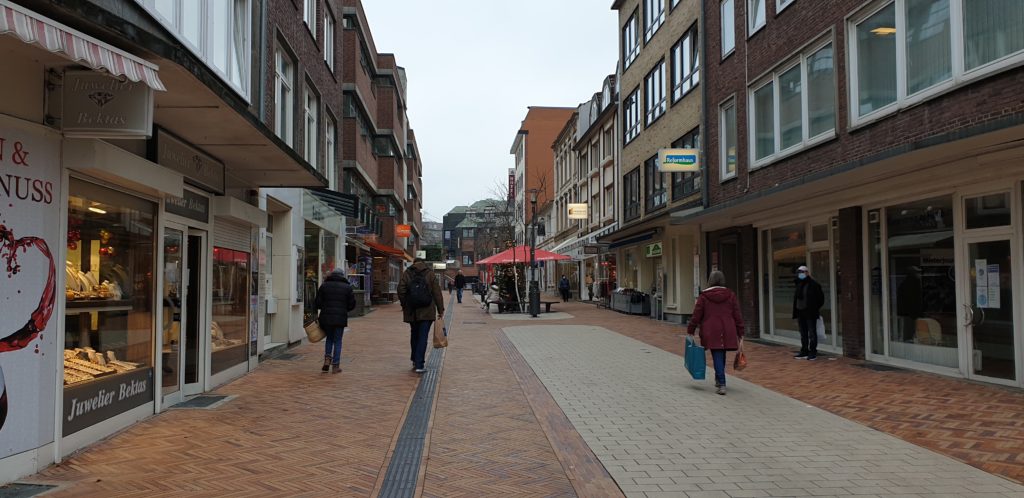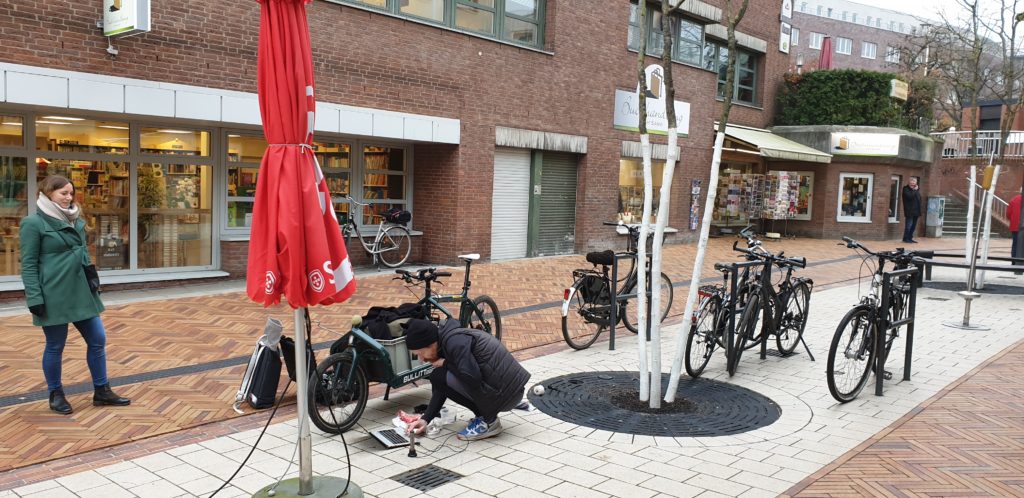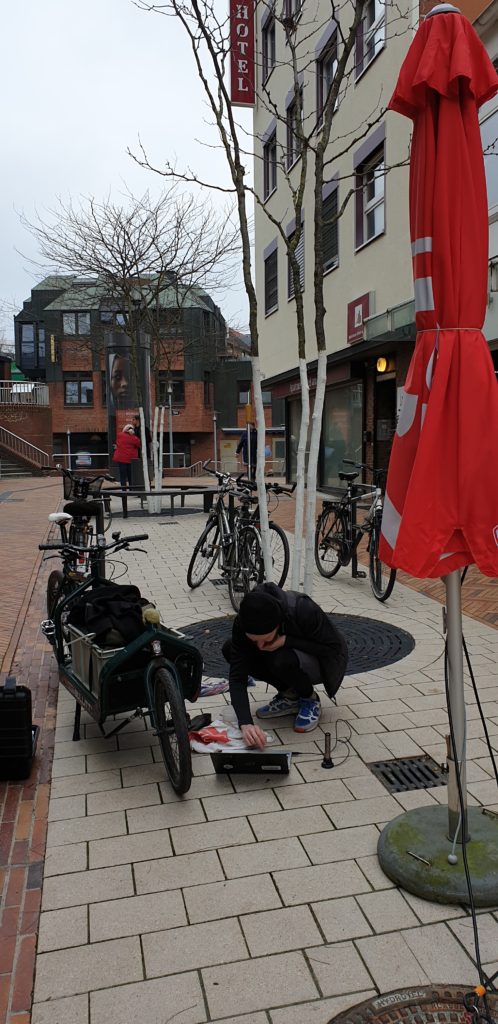The small lane Hölertwiete in Hamburg-Harburg represents a good example of the future challenges of climate-change adapted city development: the narrow and highly paved lane is lined by two densely built rows of houses. Due to this structural design, increasingly occurring extreme weather events, such as heavy rains and heat waves, have a particularly strong impact.


One solution for mitigating urban heat-island effects one the one hand and preventing overloading of the urban sewer systems and flooding on the other hand is the so-called sponge-city concept. In the project BlueGreenStreets, geo-ecologist Michael Richter and his colleague Prof. Wolfgang Dickhaut from the Department of Resource Efficiency in Architecture and Planning of the HafenCity University Hamburg investigate, how to make the best use of rainwater from roofs. Instead of leading the rainwater as usual from the adjacent gutters to the sewer system, they are supplying it to the few trees growing at Hölertwiete. Together with experts from soil science and plant ecology they are testing the small-scale sponge-city system. One key question is, how the supply of rainwater affects the vitality of the planted honey locusts and consequently also their potential to provide ecosystem services and more specifically their cooling potential.

The team of specialists from different disciplines is conducting a series of experiments with regard to climate-adapted urban planning in the city of Hamburg and its surrounding areas. These include experiments with green roof systems, an experiment in a tree nursery and the measurement campaigns in the real city environment such as Hölertwiete. The sensor technology installed at the different sites varies according to the different research questions and respective approaches. At Hölertwiete, the focus is on continuous level and discharge measurements in the tree pits – an ideal and creative area of application for UGT expertise and the level monitoring instruments of our partner company In-Situ.

This approach, however, is also viewed sceptically, especially from the city administration. Future results have yet to show if the adduction of water is a curse or a blessing for the trees. The topic of waterlogging is widely debated. Michael Richter is confident, however, that using rainwater for the trees will have positive impacts for their vitality, for flood control as well as for the urban climate (keyword tree cooling).
Already for spring 2021, further tree plantings are planned on another location in Hamburg-Harburg. We as UGT follow with greatest interest, which exciting topics will become crucial for this new experiment. We will gladly assist for planning and equipping the measurement campaign. Our products from the areas of meteorology, hydrology, ecophysiology and soil science can be used and combined to evaluate the potential of such innovative urban development approaches.
